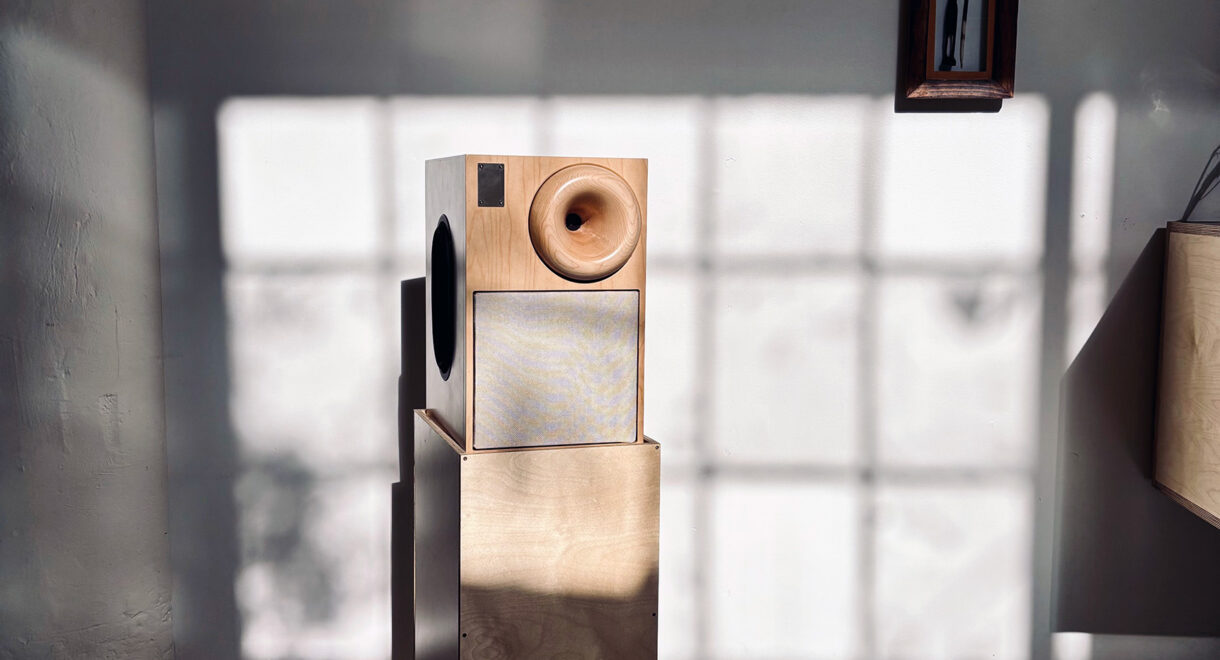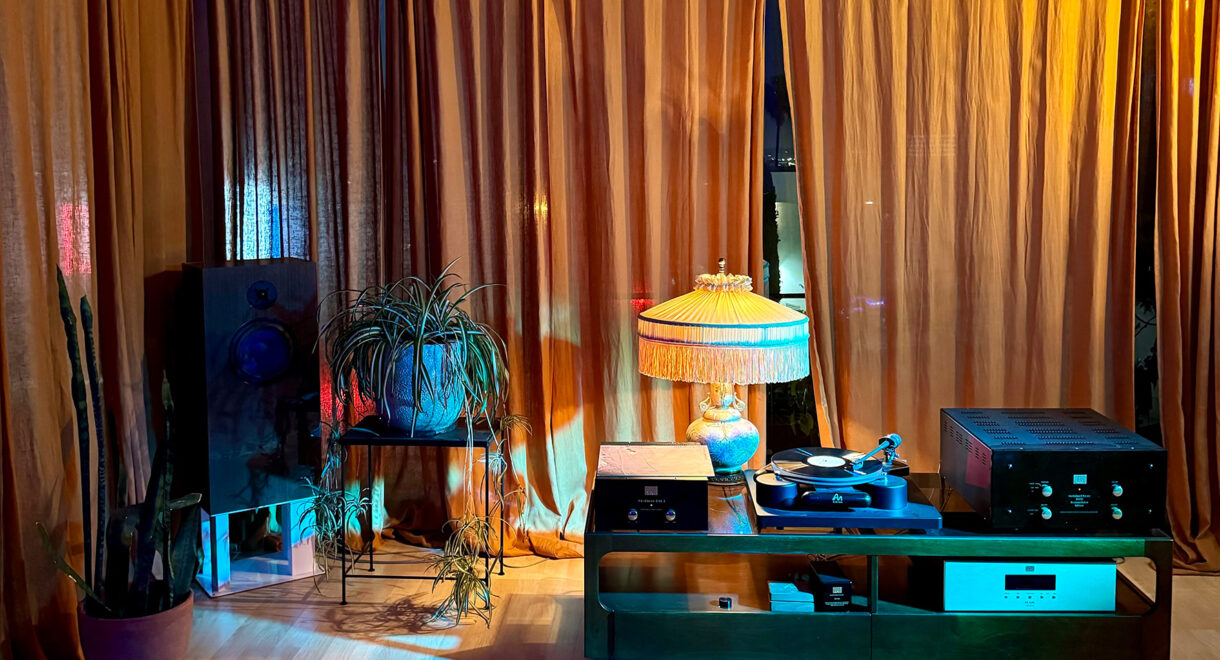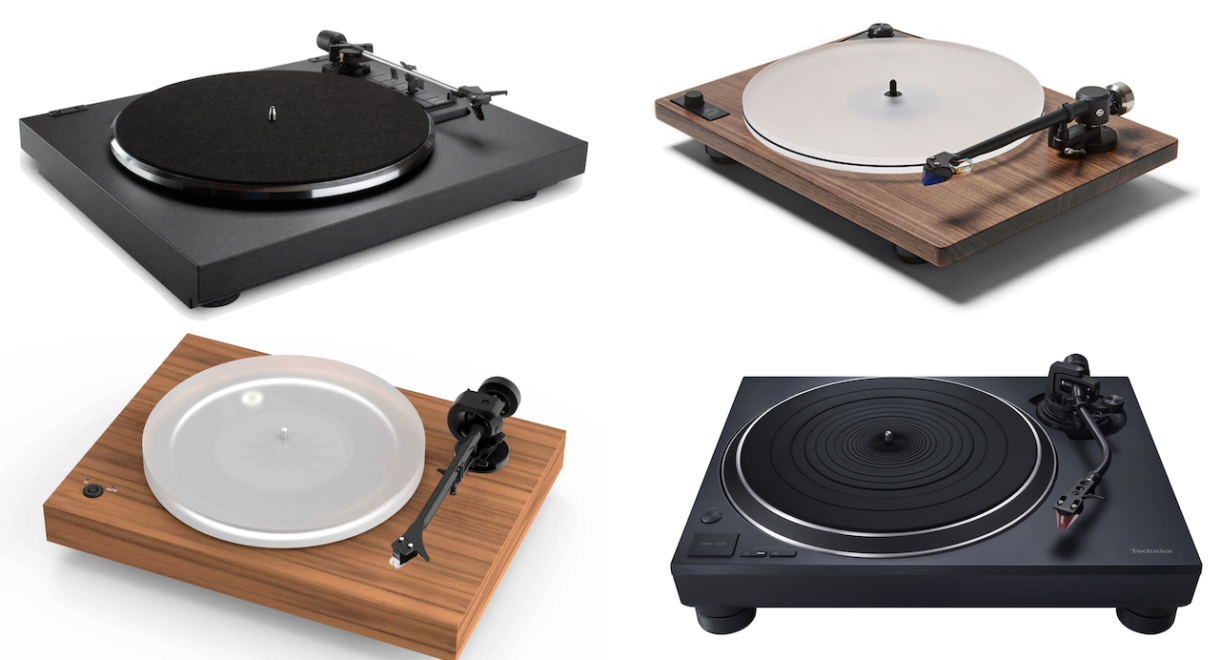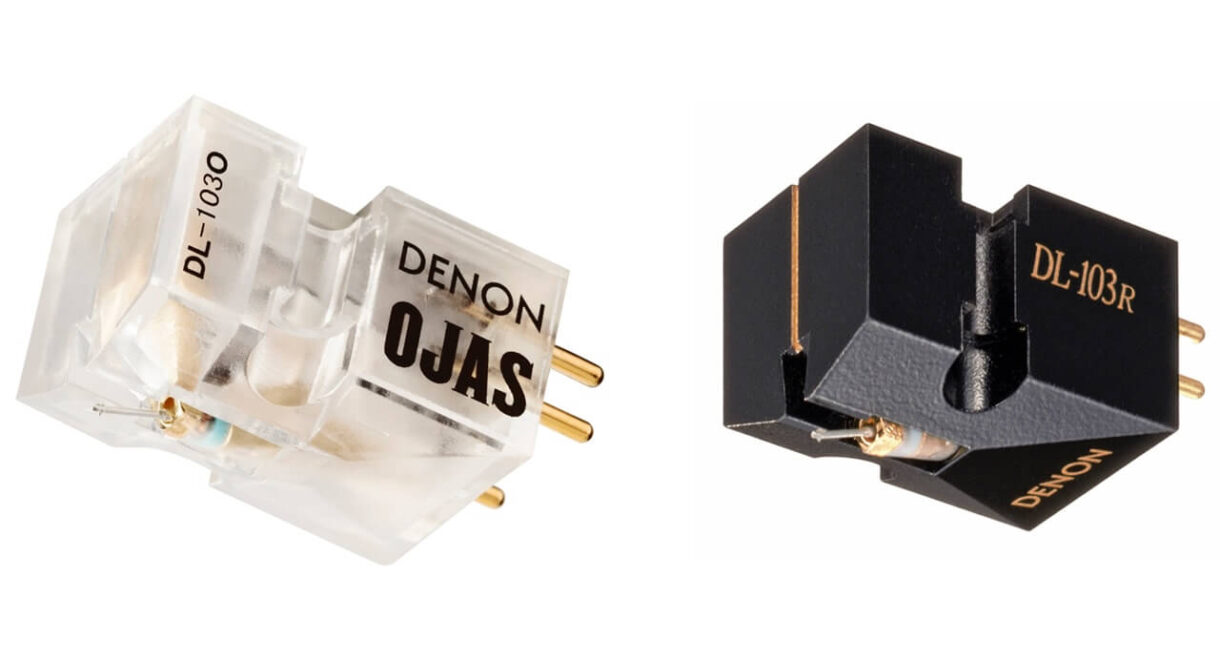Transparent clarity, deep bass, and “Invisible Sound” from German audio company ADS. Background: One of the lesser known hi-fi brands of the ’70s, ADS (Analog and Digital Systems) […]
All Hail the Vox Discotape Unit: Two Garrard Turntables, Built-In Mixer, 50 Watts-Per-Channel Amp – and a Drink Holder

Contrary to popular belief that the discotheque and dance revolution didn’t begin until the mid-’70s, the whole two-turntables-and-a-mixer thing started happening a half-decade earlier. Demand was such that audio companies started brainstorming ways to capitalize.
The May 1973 issue of the unsung British magazine Beat Instrumental, for example, devoted 10-pages to a special section called “Discotheque Equipment Supplement: A Guide to Sounds Around and Things to Come.” Noting the rise of dance clubs and DJs, one British gear maker in the story accurately explained the phenomenon like this: “A lot of people who have not taken time off to learn an instrument can buy a unit, play places and be ‘somebody.'” He called the trend “the most commercial music thing ever and the future is limitless.”
Attempting to understand the trend, Beat Instrumental offered this funny, and true, suggestion: “Reasons for the discos’ appeal range from the fact that people like to dance together to a symptom of life’s impermanence and the swing to instant stimuli.”

The section offered the rationale for its existence in the introduction, referencing a famed DJ for pirate radio station Radio Caroline: “Discotheques, whether Emperor Rosko leading his army through England’s hills and dales or a bloke down the road taking his gramophone to the village hall, have been rocketing in popularity ever since they were realised as an alternative to second-rate groups and juke boxes.
“With this growth in popularity has come a widening of the market in disco equipment, which now includes voice/record faders, sound and light synchronisers, deck monitor systems and even jingle and effect cassette units.”
The Vox Discotheque (Vox Discotape in the US) is one of the most covetable of the era. Made from the same Vox shell that housed their iconic Continental Organ and featuring a sturdy chrome stand, the Discotheque featured two Garrard SP25s, Shure cartridges, a cassette recorder to capture your sets and a built-in 50-watt Vox amp. Add in sliding volume controls, cassette and microphone controllers and — get this — “record scratch and rumble filters.”
Vox officially introduced the Discotape in 1971. Below, the specs, courtesy of the Vox Showroom:
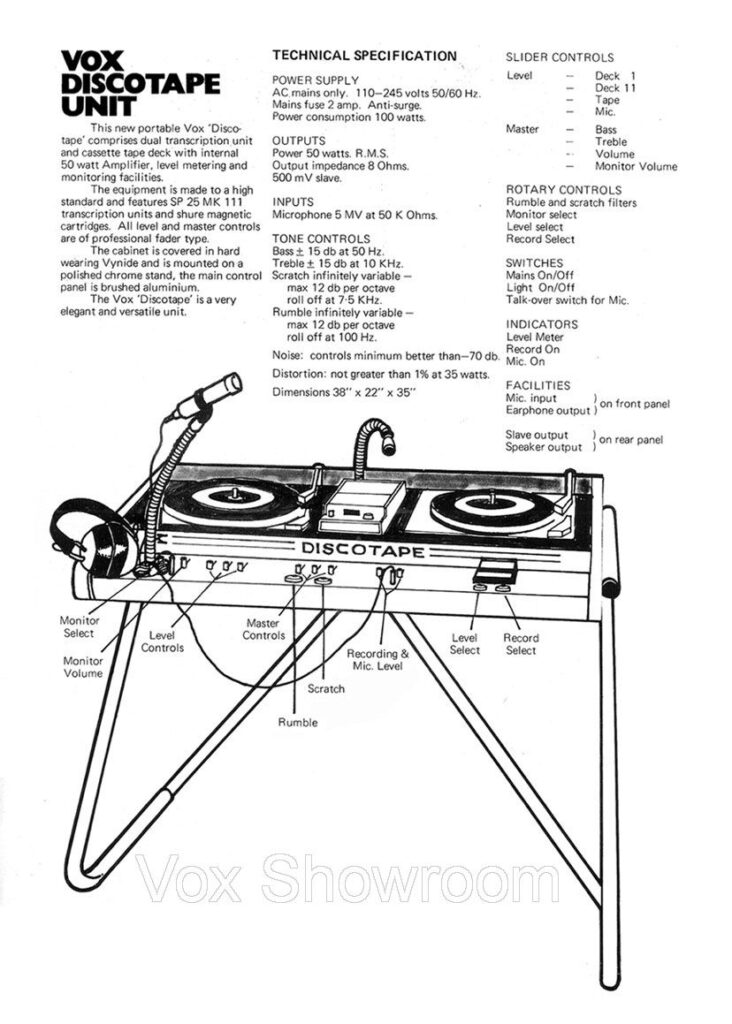
Here’s one in action.
The Beat Instrumental section was revelatory for a number of reasons, most obviously for the sheer volume of makes and models available by 1973. It wasn’t just Vox’s market. (Sorry for the low-res images.)

Below, a brief snapshot from the magazine.

Finally, to give you a sense of what was happening in the world of music tech at the time, that same issue also included an ad for a new instrument that would go on to change music: The Mini Moog.

Want to read the whole issue? It can be found at WorldRadioHistory.





